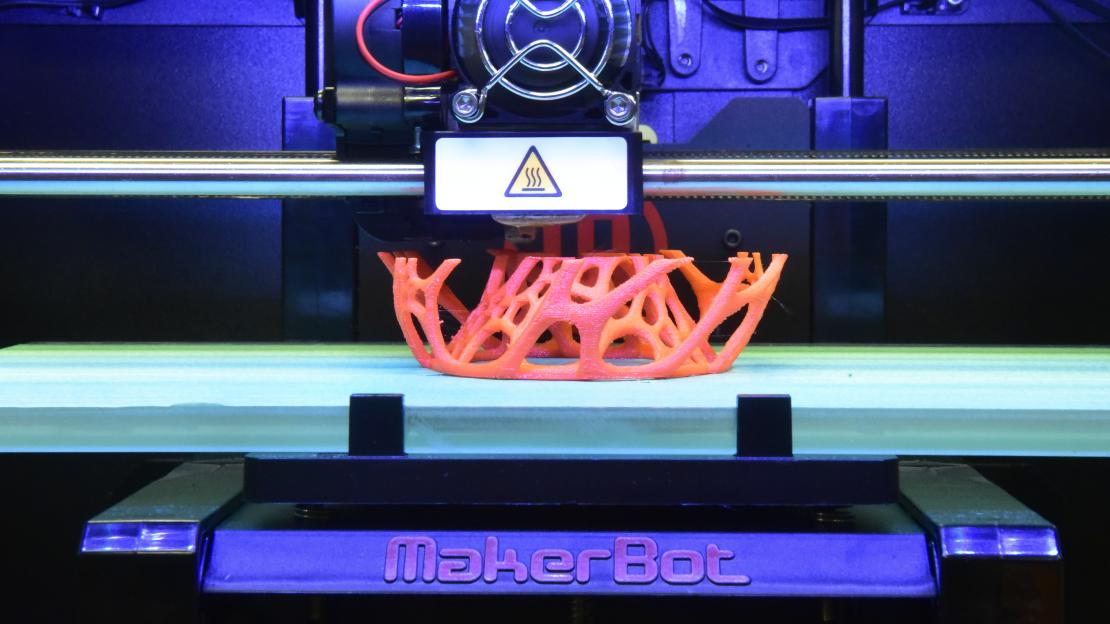The UTSC Library Makerspace may be known for the intricate 3D-printed models lining its window, but students and faculty are finding new and creative ways all the time to use its tools.
The Makerspace at U of T Scarborough is a combined workspace and laboratory. Among the advanced tools available are 3D scanners, 3D printers, virtual reality headsets, iMacs and a robotic arm. Users also have access to software, like Adobe Creative Cloud.
The goal of the Makerspace is to give students and faculty the freedom to create – this is just what fourth-year chemistry undergraduate Kyle Agmata and his supervisor, Senior Research Associate Ronald Soong, did this summer.
When Agmata approached his final research project for his fourth-year course, Directed Research in Chemistry, Soong proposed that Agmata tackle a project using an Arduino board, a computer programming tool that can be rented from the Makerspace.
“We wanted to go away from the conventional,” Agmata says. “The Makerspace was something really different.”
Agmata used technologies in the Makerspace to craft the pieces needed to work with the Arduino board. He created three sophisticated chemistry instruments: a calorimeter (for measuring a temperature change during chemical reactions) using a 3D-printed cup and lid, an auto-titrator (for automatically dispensing an acid into a base, or vice versa, while tracking pH) with a digital scale and a fraction collector (for separating and collecting various fractions of a solution) with a rotating carousel.
“Automation is so prevalent today and these are skills that you’ll need in the future - from prototyping, to learning the programing, to learning the overall engineering behind it,” Agmata says. “These are useful in any field.”
Soong is using Agmata’s work as evidence that the Makerspace can be used in chemistry courses. Soong says he hopes to integrate different technologies into the life-science curriculum, to adapt to the increasingly multidisciplinary nature of science.
“I strongly believe in learning through making,” says Soong. “I am highly encouraged after seeing how the Makerspace can provide a collaborative learning environment for students.”
Soong plans to hold workshops in the coming year to introduce life-science students to the Makerspace as an asset to chemistry, and find new ways to use its tools.
“Initially it was just the two of us shooting ideas off each other,” says Agmata. “The more students we bring in the easier it will be to create something new.”
Brian Harrington, Assistant Professor, Teaching Stream, used DE2 boards for his Computer Organization course. Similar to Arduino boards, DE2 boards are computer programming software that allows students to print a circuit directly on to hardware, which lets them create a real circuit board without having to construct the circuitry themselves.
Harrington says the first three-quarters of the semester are spent teaching students how to operate the boards. The last quarter is spent on a project with only one parameter: build something cool.
“I like the fact that students are not limited. They’re used to projects where they have a very limited scope in which they can work,” says Harrington. “These DE2 boards allow students to build anything.”
Students can build anything from games, to something that controls hardware, to a tool for future hardware users. Harrington says that The Makerspace has made the DE2 boards more accessible to students, which has caused the quality and ambition of the projects to go up.
“What I really like is there is somewhere on campus that students can go and have resources to build things that interest them, we’re not just limiting it to building something for a course,” he says. “It really opens up a world of possibilities.”
The UTSC Library Makerspace is available to staff, faculty, and students, who must attend a one-time introductory orientation session to access the space and its equipment. Dates for upcoming orientations will be posted through the UTSC Intranet in the fall semester.
Agmata says he encourages students from all fields of study to visit the Makerspace.
“It’s usually that first hurdle of going and trying it out,” he says. “But after you hold something that you made yourself in your hands, you’ll be hooked.”
